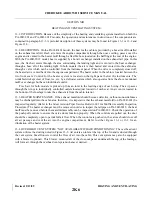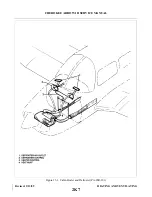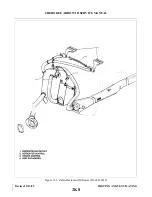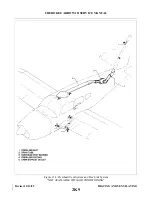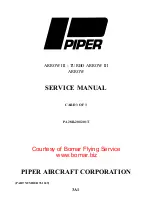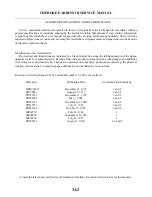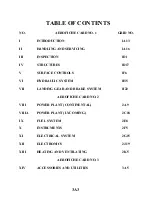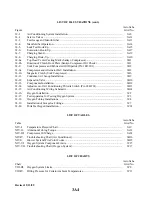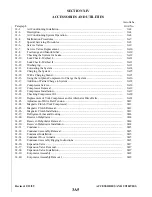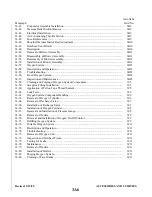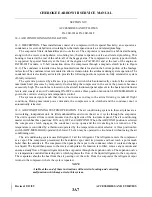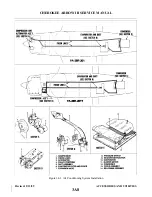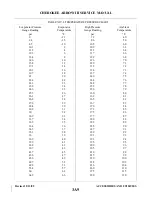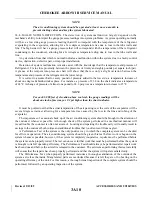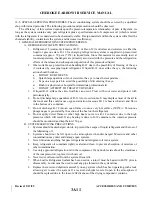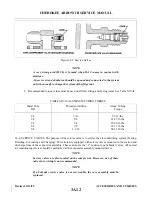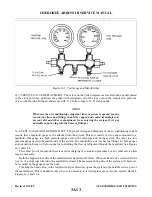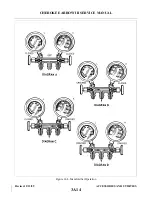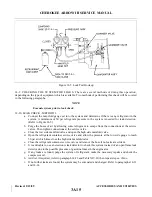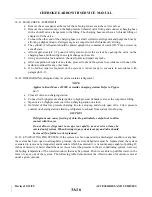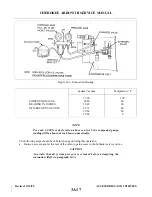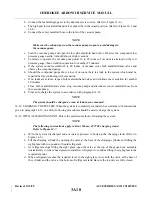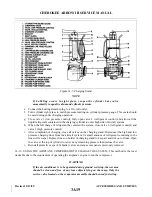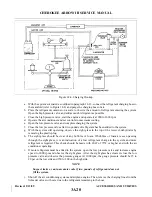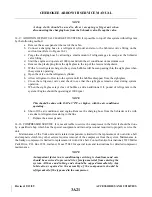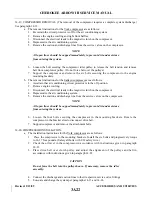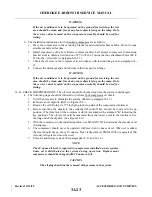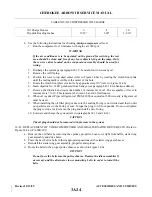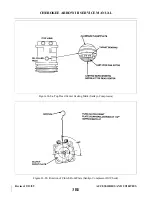
NOTE
The air conditioning system should be operated at least once a month to
prevent sticking valves and keep the system lubricated.
14-4. MALFUNCTION DETECTION. The detection of system malfunction largely depends on the
mechanic’s ability to interpret the gauge pressure readings into system problems. A system operating normally
will have a low side gauge pressure reading that will correspond with the temperature of the refrigerant
evaporating in the evaporator, allowing for a few degrees temperature rise due to loss in the tube walls and
fins. The high side will have a gauge pressure that will correspond with the temperature of the refrigerant
condensing in the condenser, allowing for a few degrees temperature drop due to loss in the tube walls and
fins.
Any deviation from that which is normal indicates a malfunction within the system due to a faulty control
device, obstruction, defective part, or improper installation.
Detection of system malfunction is made easier with the knowledge that the temperature and pressure of
Refrigerant 12 is in close proximity between the pressures of twenty and eighty pounds per square inch (psi).
A glance at the temperature-pressure chart will show that there is only a slight variation between the
temperature and pressure of the refrigerant in the lower range.
It is correct to assume that for every pound of pressure added to the low side, a temperature increase of
about one degree Fahrenheit takes place. For instance, a pressure of 23.8 on the chart indicates a temperature
of 24°F. A change of pressure of almost one pound to 24.6 psi gives us a temperature increase to 25°F.
NOTE
For each 1,000 feet of elevation above sea level, the gauge readings will be
about one inch of mercury or 1/2 psi higher than the chart indicates.
It must be pointed out that the actual temperature of the air passing over the coils of the evaporator will be
several degrees warmer allowing for a temperature rise caused by the loss in the fins and tubing of the
evaporator.
The importance of a seasonal check up of the air conditioning system should be brought to the attention of
the customer whenever possible. A thorough check of the system performed in a methodical manner will
reveal trouble the customer is often not aware of. Locating and repairing the trouble early will usually result in
savings to the customer both in time and additional troubles that too often result from neglect.
A Performance Test of the system is the only positive way in which the complete system can be checked
for efficient operation. The air conditioning system should be given this test before work is begun on the
system whenever possible, however, if the system is completely inoperative, repairs must be performed before
the system can be properly tested. The test can uncover further work that must be performed before the system
is brought to its full operating efficiency. The Performance Test should always be performed after repair work
has been done and before the aircraft is released to the customer. The serviceman performing this test carefully
will ensure that the repairs have been properly performed and that the system will operate satisfactorily.
The Performance Test, when properly performed, includes a thorough examination of the outside of the
system as well as the inside. Many related parts are overlooked because it is felt they are of no bearing on the
operating efficiency of the unit. For this reason, a thorough visual inspection of the complete system should be
performed, followed by an operating inspection of the system.
Revised: 2/13/89
3A10
CHEROKEE ARROW III SERVICE MANUAL
ACCESSORIES AND UTILITIES
Summary of Contents for ARROW III
Page 4: ...THIS PAGE INTENTIONALLY LEFT BLANK 1A4...
Page 12: ...THIS PAGE INTENTIONALLY LEFT BLANK 1A12...
Page 94: ...Figure 4 2 Wing Installation Revised 2 13 89 1D22 CHEROKEE ARROW III SERVICE MANUAL STRUCTURES...
Page 171: ...lH3 INTENTIONALLY LEFT BLANK...
Page 172: ...lH4 INTENTIONALLY LEFT BLANK...
Page 286: ...THIS PAGE INTENTIONALLY LEFT BLANK Revised 2 13 89 2A8...
Page 528: ...INTENTIONALLY LEFT BLANK 2K10 THRU 2L24 2K10...

